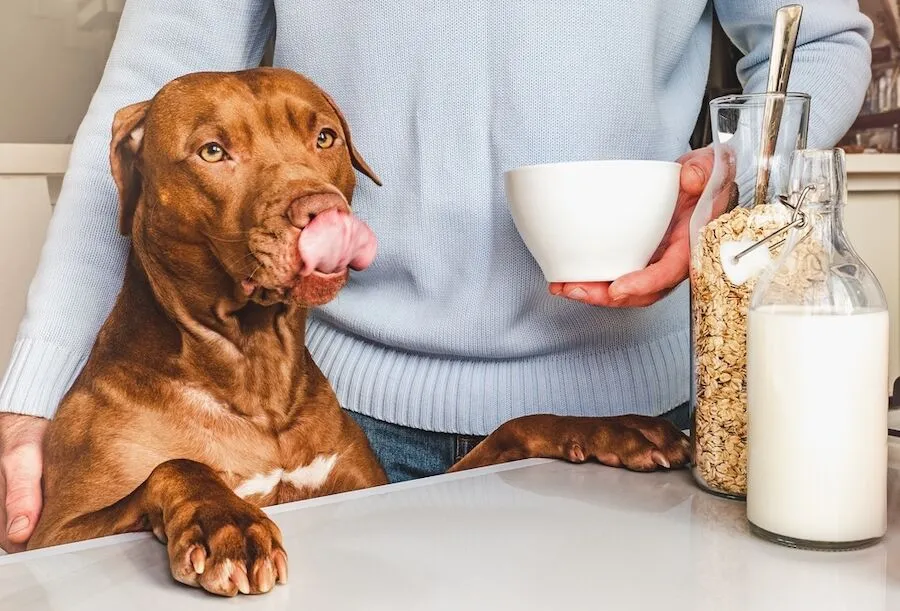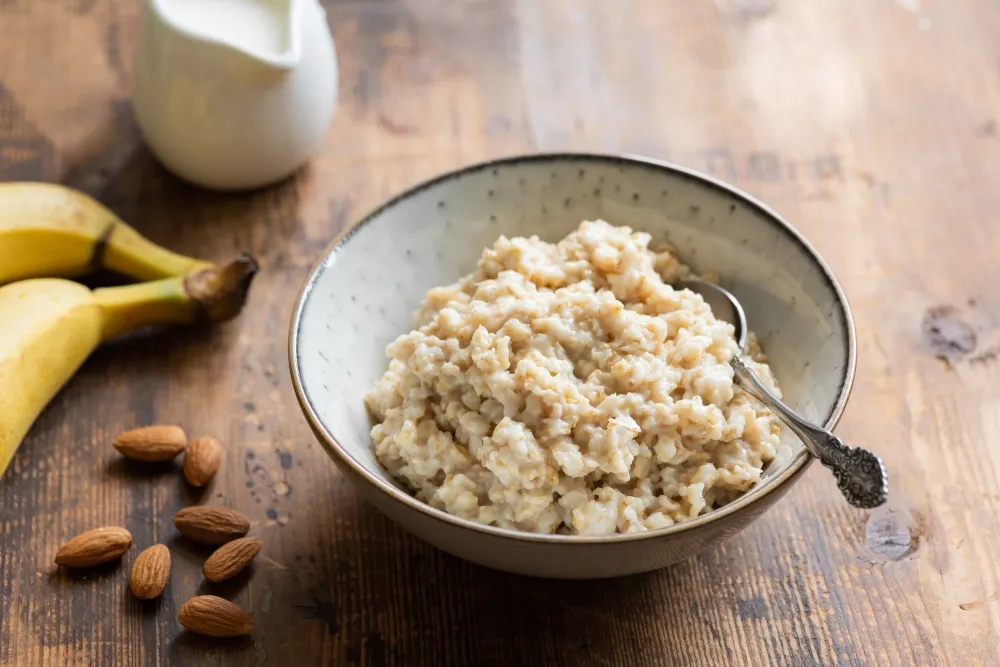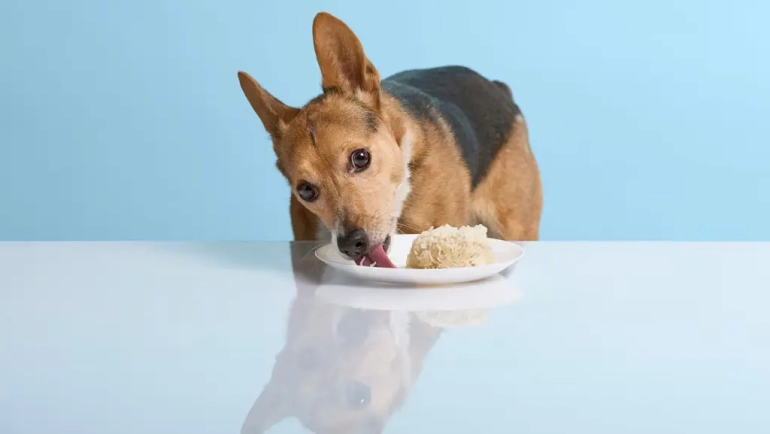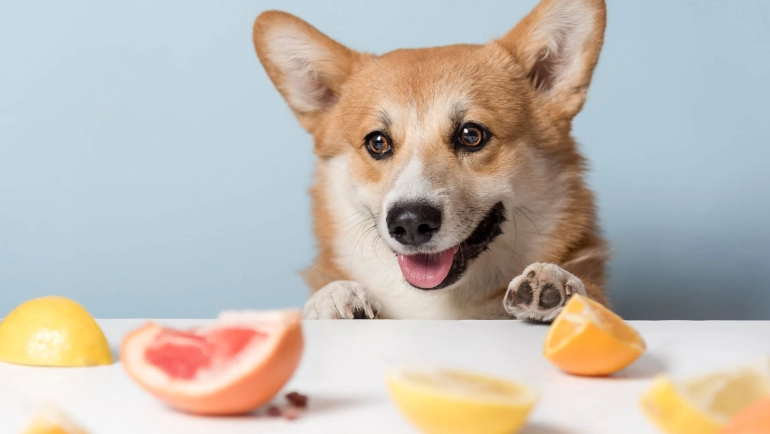280Views

Canines & Oats: A Tailored Guide to Feeding Your Dog Oatmeal
Let’s face it, sharing your morning oatmeal with your furry friend seems harmless, even adorable.
But before you become the next viral “dog eating oatmeal” internet sensation, it’s crucial to understand the “paws” and “cons” of canine oatmeal consumption.
Fear not, fellow dog owner, because this comprehensive guide will demystify the truth about oatmeal and your dog’s diet!
Oatmeal: A Nutritional Powerhouse (But Not for Every Pup)
Oatmeal boasts an impressive array of nutrients beneficial for both humans and our loyal companions. It’s rich in:
- Fiber: Aids digestion, regulates blood sugar, and promotes weight management.
- B vitamins: Support energy levels, skin, and coat health.
- Iron: Contributes to healthy red blood cells.
- Linoleic acid: An omega-6 fatty acid that promotes healthy skin and a shiny coat.
However, remember, dogs have different dietary needs than humans. While oatmeal offers valuable nutrients, it should be considered a treat, not a staple.
Unlocking the “Paws”itive Side of Oatmeal:
- Plain is the Way to Go: Ditch the sugary toppings, raisins, and artificial flavors. Opt for plain, cooked oatmeal made with water, not milk (lactose intolerance is common in dogs).
- Portion Control is Key: A moderate serving is crucial. Aim for 1 tablespoon of cooked oatmeal per 20 pounds of your dog’s weight. Exceeding this can lead to digestive upset.
- Consider Your Dog’s Needs: Consult your veterinarian before introducing oatmeal, especially if your dog has health conditions like allergies or sensitivities.
Turning Up the “Cons”:
- Too Much Fiber can be Ruff: High fiber intake can cause diarrhea and vomiting in some dogs. Start with small amounts and monitor your dog’s reaction.
- Hidden Dangers Lurk: Flavored oatmeal often contains harmful ingredients like xylitol (toxic to dogs). Always double-check labels.
- Not a Replacement for Balanced Diet: Remember, oatmeal is a treat, not a substitute for a complete and balanced dog food formulated to meet their specific needs.
You May Also Like: Can My Dog Eat Fruits?
Beyond the Bowl: Creative Oatmeal Adventures:
- Frozen Fun: Freeze plain oatmeal in Kongs or lick mats for a refreshing summer treat.
- Mealtime Mashup: Mix a small amount of plain oatmeal with your dog’s regular food for added texture and variety.
- Homemade Treats: Bake dog-friendly oatmeal cookies using safe ingredients like peanut butter and bananas.
Tailoring the Treat: Breed-Specific Considerations
- Active Breeds: Oatmeal’s energy-boosting properties can be beneficial for active pups.
- Sensitive Stomachs: Start with minimal amounts and monitor for reactions. Smaller breeds might be more prone to digestive issues.
- Older Dogs: Easily digestible oatmeal can be a good option for senior pups with dental problems.
Remember, every dog is unique. Consult your veterinarian to determine if oatmeal is a suitable treat for your furry friend, and always prioritize a balanced diet formulated for their specific needs. Now you’re equipped to navigate the world of canine oatmeal consumption with confidence!
How to cook oatmeal for dogs?

While oatmeal can be a healthy treat for dogs in moderation, it’s important to prepare it the right way to avoid any digestive issues. Here’s a guide on how to safely cook oatmeal for your dog:
Ingredients
- Plain rolled oats (not instant or quick oats)
- Water
- Optional: Pumpkin puree (unsweetened, plain only), mashed banana (ripe), unsweetened peanut butter (xylitol-free)
Instructions
- Choose the right oats: Avoid quick or instant oats as they tend to be higher in sugar and processing. Stick to plain rolled oats, like steel-cut or old-fashioned.
- Cook the oats: Use a 1:2 ratio of oats to water. Combine in a saucepan and bring to a boil, then reduce heat and simmer for about 15-20 minutes, or until the oats are soft and the water is absorbed.
- Cool it down: Let the oatmeal cool completely before serving to your dog. Hot oatmeal can cause burns.
- Portion control: Remember, oatmeal is a treat, not a meal. Use small portions based on your dog’s size. A tablespoon of cooked oatmeal per 20 pounds of body weight is a good starting point.
- Add toppings (optional): If you choose to add toppings, ensure they are dog-safe. Unsweetened pumpkin puree, mashed banana, or a tiny bit of xylitol-free peanut butter can be healthy and delicious additions.
- Monitor your dog: Watch your dog after eating oatmeal for any signs of digestive upset like diarrhea or vomiting. If you notice any issues, discontinue feeding it.
Safety Tips:
- Never use milk: Dogs are often lactose intolerant, so stick to water for cooking.
- Avoid sugary toppings: Skip artificial sweeteners, raisins, chocolate chips, and other sugary ingredients that can be harmful to dogs.
- Be mindful of allergies: If your dog has any allergies, check the ingredients carefully before offering oatmeal.
- Consult your vet: Always consult your veterinarian before introducing any new food, including oatmeal, to your dog’s diet, especially if they have any health conditions.


